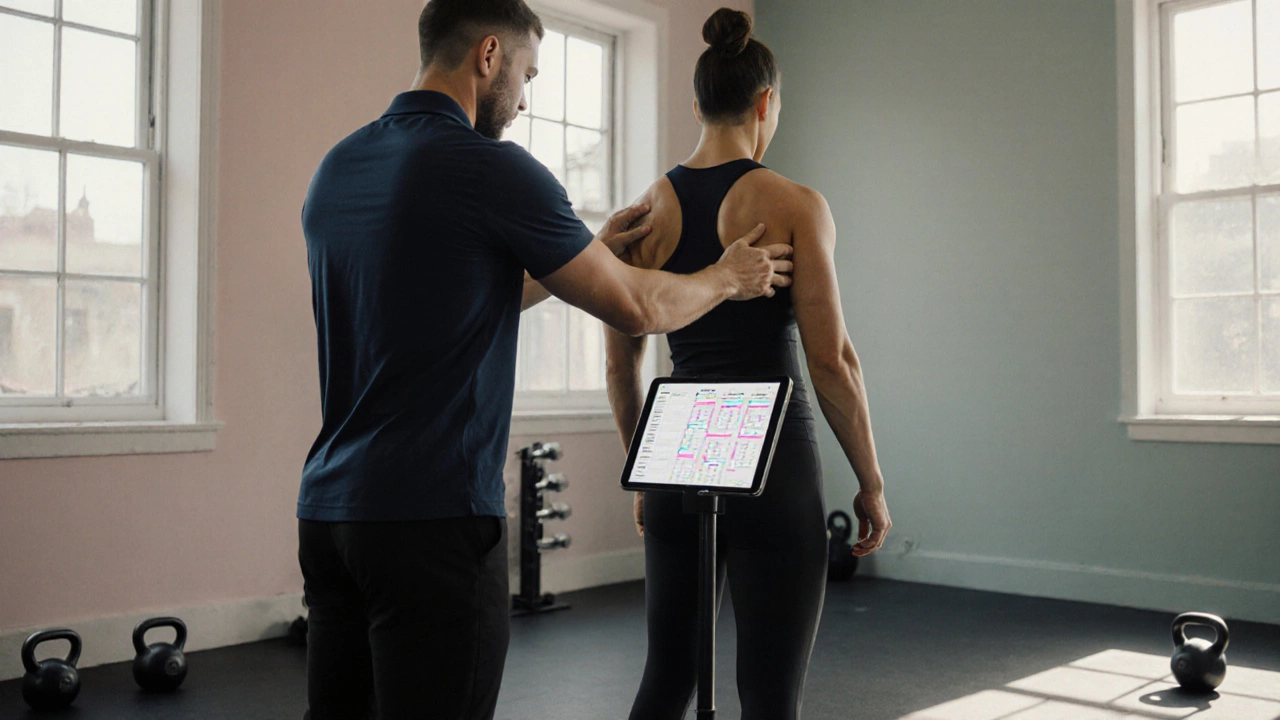
Includes national certification costs, ongoing education, and renewal fees. Typically $300-$500 for basic certification and $200-$400 for specialty certifications.
Professional liability coverage for both trainer and client. Annual premiums range from $600-$1,200, depending on coverage and claims history.
Rent for training spaces, equipment depreciation, and maintenance. Rates vary from $30-$120/hour depending on location and studio quality.
Time spent designing personalized plans, assessing progress, and providing real-time coaching during sessions.
| Model | Typical Cost per Hour | Pros | Cons |
|---|---|---|---|
| Single Session | $80-$150 | Flexibility, no long-term commitment | Highest per-hour price |
| 10-Session Package | $70-$130 | Discounted rate, builds habit | Up-front cost, may include unused sessions |
| Monthly Membership (unlimited) | $250-$500 | Best value for frequent users | Requires regular attendance to break even |
| Online/Hybrid Coaching | $40-$90 | Lower overhead, flexible scheduling | Less hands-on correction, may need equipment |
Ever wonder why a single hour with a personal trainer is often priced between $70 and $150? The answer isn’t a mysterious markup; it’s a mix of professional training, safety guarantees, and business costs. Below we break down each cost driver, show you real‑world price ranges, and give practical ways to get a solid return on your money.
To call themselves a certified personal trainer they must pass a nationally recognized exam and often maintain continuing education credits. In Australia, the most recognized bodies are ACSM, NASM, and REPs (Register of Exercise Professionals). A basic certification can cost $300‑$500, while advanced specialties (e.g., corrective exercise, sports performance) add another $200‑$400 each. Trainers also pay annual renewal fees-usually $100‑$150-to keep their credentials active. Those expenses are baked into the hourly rate you pay.
Fitness work involves physical risk, so trainers carry professional liability insurance to protect both themselves and clients. A typical policy for an individual trainer in Perth runs $600‑$1,200 per year, depending on coverage limits and claim history. If a trainer works through a gym, the gym’s insurance may cover some liability, but the trainer often still needs personal coverage. This safety net is non‑negotiable, and the cost per session adds up quickly.

Most trainers don’t own a full gym. They rent space in commercial facilities, pay membership fees, or use boutique studios. Renting a dedicated training area can cost $30‑$70 per hour in city centers, while high‑end studios charge $80‑$120. On top of rent, there’s equipment depreciation-dumbbells, kettlebells, resistance bands, and cardio machines-all of which need regular maintenance or replacement. Trainers factor these recurring expenses into the price you see on the schedule.
Unlike generic workout videos, a personalized training program is built from scratch based on your goals, health history, movement assessment, and lifestyle. Creating that plan can take anywhere from 30 minutes to 2 hours of research, testing, and documentation. Then there’s the actual coaching time-monitoring form, providing motivation, and adjusting loads on the fly. All that one‑on‑one attention is the core value that justifies higher fees.
Pricing is heavily influenced by geography. Trainers in affluent suburbs of Perth, like Subiaco or Cottesloe, often charge premium rates because the local market can bear it. Meanwhile, trainers operating in regional towns may charge $45‑$70 per hour. In high‑cost cities worldwide-New York, London, Sydney-rates can top $200 per hour. Understanding the local market helps you gauge whether a trainer’s fee aligns with regional norms.
Trainers use several structures to bill clients. The table below compares the most common models, showing typical price ranges for 2025 in Australia.
| Model | Typical Cost per Hour | Pros | Cons |
|---|---|---|---|
| Single Session | $80‑$150 | Flexibility, no long‑term commitment | Highest per‑hour price |
| 10‑Session Package | $70‑$130 | Discounted rate, builds habit | Up‑front cost, may include unused sessions |
| Monthly Membership (unlimited) | $250‑$500 | Best value for frequent users | Requires regular attendance to break even |
| Online/Hybrid Coaching | $40‑$90 | Lower overhead, flexible scheduling | Less hands‑on correction, may need equipment |

Now that you know where the money goes, here are five realistic tactics to keep the personal trainer cost manageable:
If the price tag still feels steep, explore these options that still deliver solid results:
A good rule of thumb: calculate the expected outcome versus the cost. If a trainer helps you lose 5kg of fat, improve your squat by 20kg, or prevent injury that would otherwise require costly medical care, the investment pays off. Look for measurable milestones-body composition tests, strength benchmarks, or functional assessments-and reassess after 8‑12 weeks. If progress stalls, discuss program tweaks or pricing adjustments with your trainer.
New trainers typically have fewer certifications, lower insurance premiums, and less overhead, allowing them to offer rates $20‑$40 cheaper per hour. However, they may also have less practical experience and fewer client success stories.
Yes. Virtual coaches eliminate gym rent and equipment depreciation, so hourly fees often sit between $40 and $90. The trade‑off is less real‑time form correction, which can be mitigated with occasional in‑person sessions.
Many trainers are open to discounts for longer commitments, off‑peak slots, or referrals. It’s worth asking for a package deal or a trial period before locking in a full‑price contract.
Clients aren’t required to carry their own liability insurance, but it’s smart to have personal health coverage. The trainer’s insurance protects both parties in case of injury.
Look for clear credentials, a transparent pricing breakdown, client testimonials, and measurable progress tracking. A trainer who can explain where each dollar goes is usually more trustworthy.